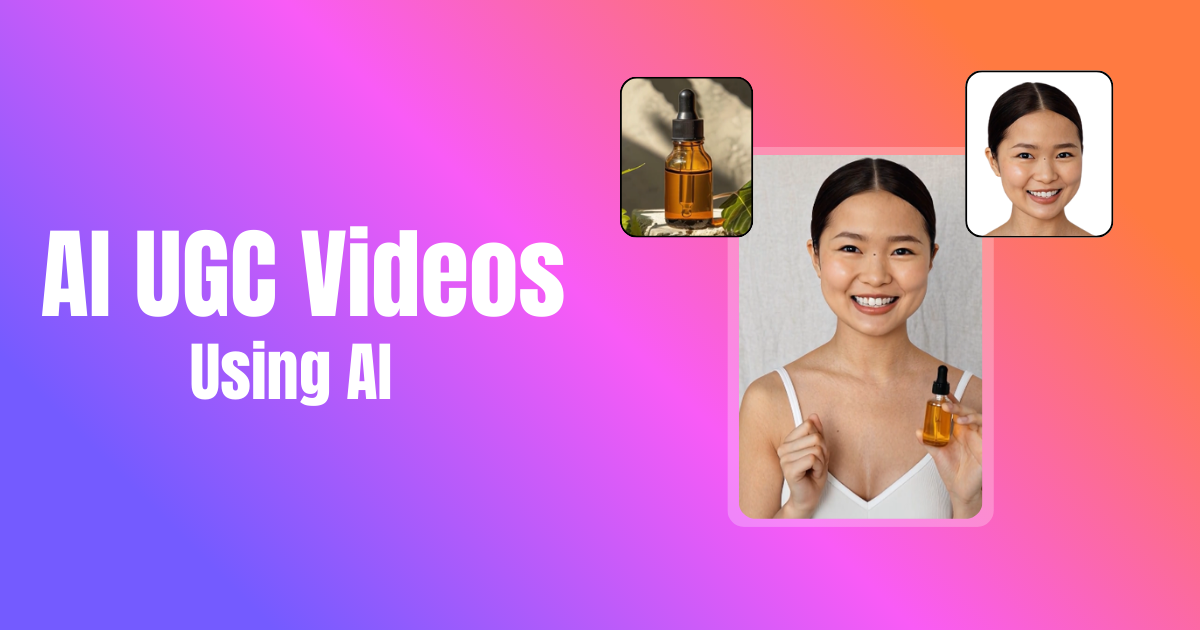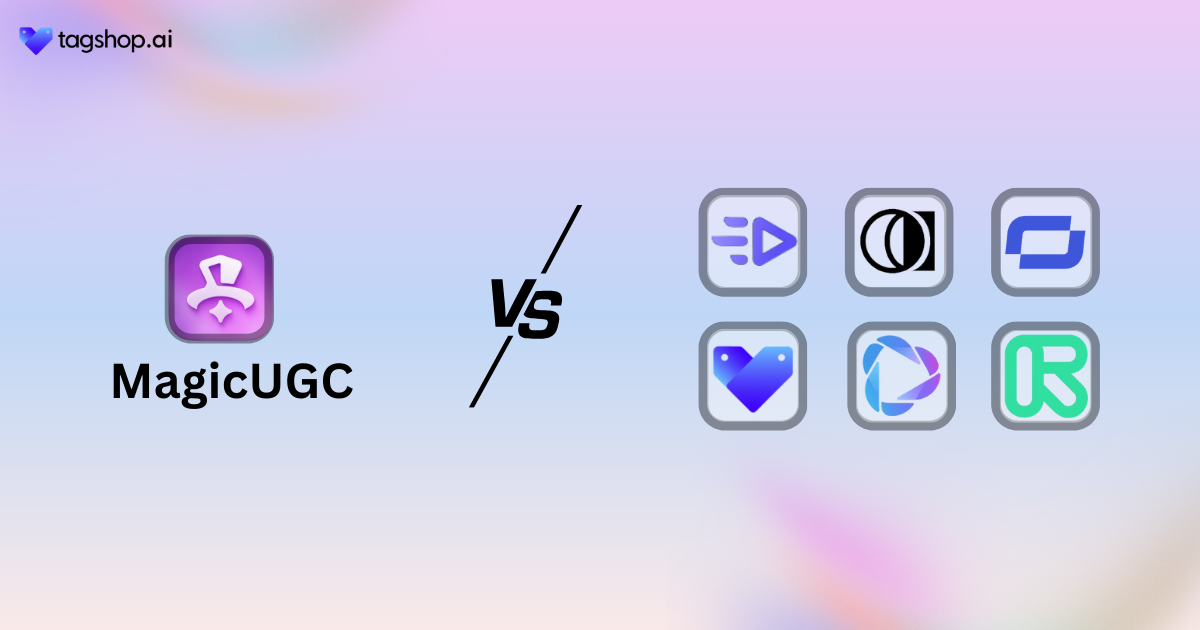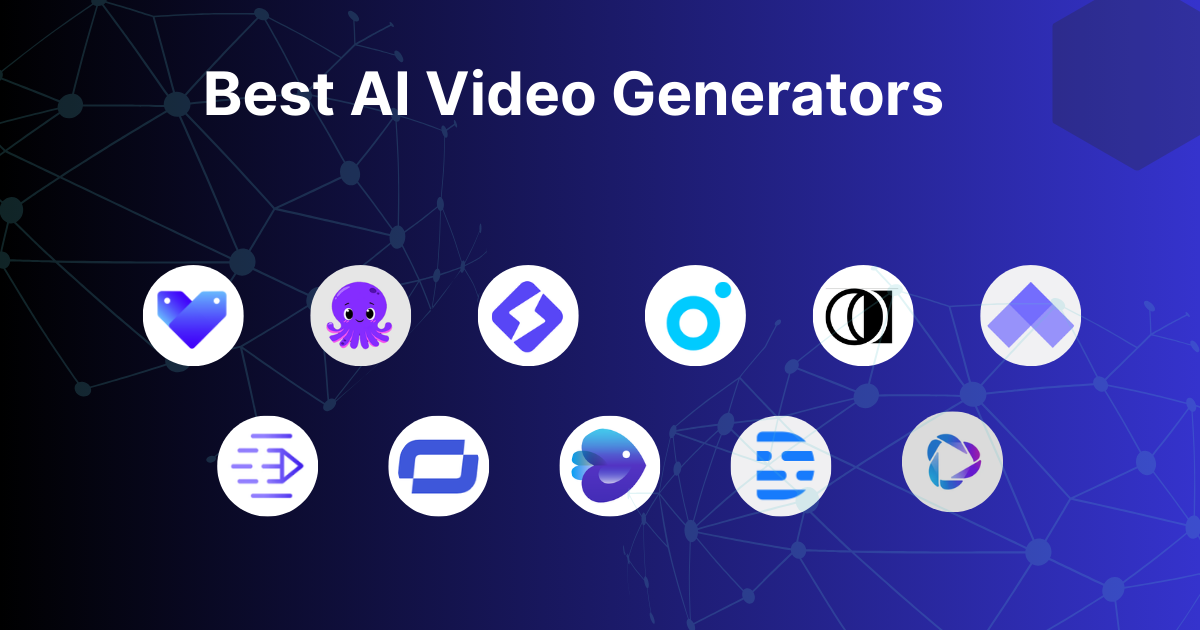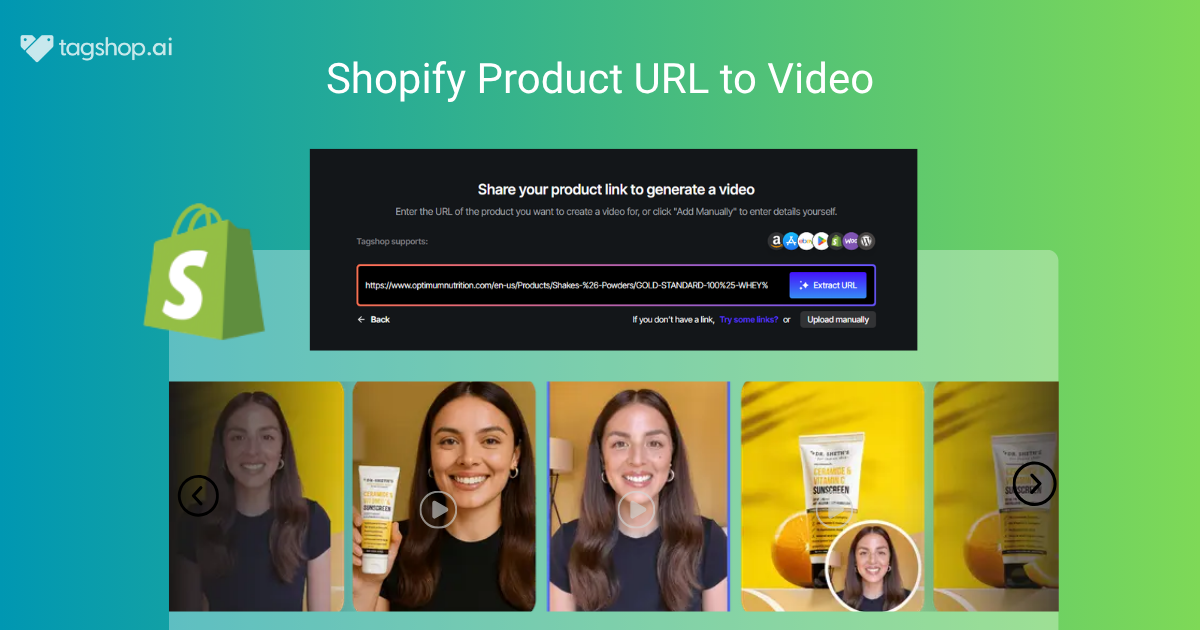How Agencies Can Produce High-Volume UGC Videos Using AI
Agencies are under immense pressure to deliver more content than ever before. From TikTok ads to Instagram Reels and YouTube Shorts, brands expect agencies to produce fresh, authentic, and high-performing UGC-style videos at scale. However, traditional workflows, including managing influencers, coordinating shoots, and editing, are slow, costly, and challenging to scale.
That’s where AI comes in. With AI-driven UGC video tools, agencies can produce 10–100 videos per week, tailor campaigns for multiple clients, and reduce both costs and time.
Why Agencies Need Scalable UGC Video Solutions
The marketing landscape is evolving at a rapid pace, and agencies managing multiple clients are overwhelmed. Every client across multiple platforms is asking for videos in bulk. TikTok, Instagram Reels, YouTube Shorts, and even performance-driven ad formats now require a steady stream of authentic, short-form videos that feel native to the platform. This is where a scalable UGC video solution, such as the best AI reel generator, becomes essential to meet the demand and streamline production.

1. Clients Are Demanding More Content
Brands these days do not settle for one or two hero creatives. They expect agencies to deliver a dozen videos for just one campaign. These videos should be optimized for different platforms, audiences, and objectives. Without enough creative volume, campaigns stagnate, and performance drops.
2. Limitations of traditional UGC workflows
While working with influencers can be effective, it comes with severe limitations.
Influencers’ delays – Timely delivery is one of the critical issues agencies face. Creators may miss deadlines or require multiple rounds of revisions.
Editing bottlenecks – The traditional video editing process takes time to pick the right tool to cater to different editing demands. Hence, post-production consumes your time and productivity.
Budget constraints: Hiring influencers, paying for shoots, and managing logistics quickly add up, making it hard to produce at scale. This creates a production ceiling that agencies can’t keep up with, leading to slower campaign rollouts and missed opportunities.
3. High-Volume Content Is the Key to Growth
When it comes to performance marketing, volume is everything. Agencies need a dozen creative assets for;
- A/B testing hooks and CTAs to determine what resonates the most with the target audience or look-alike audience.
- Performance ads that require constant refreshes to avoid fatigue.
Without high-volume video output, agencies risk underperforming campaigns, dissatisfied clients, and limited scalability.
What Is AI-Generated UGC?
AI UGC, also known as artificial intelligence user-generated content, is not created by influencers and UGC creators; instead, it is generated through artificial intelligence tools.
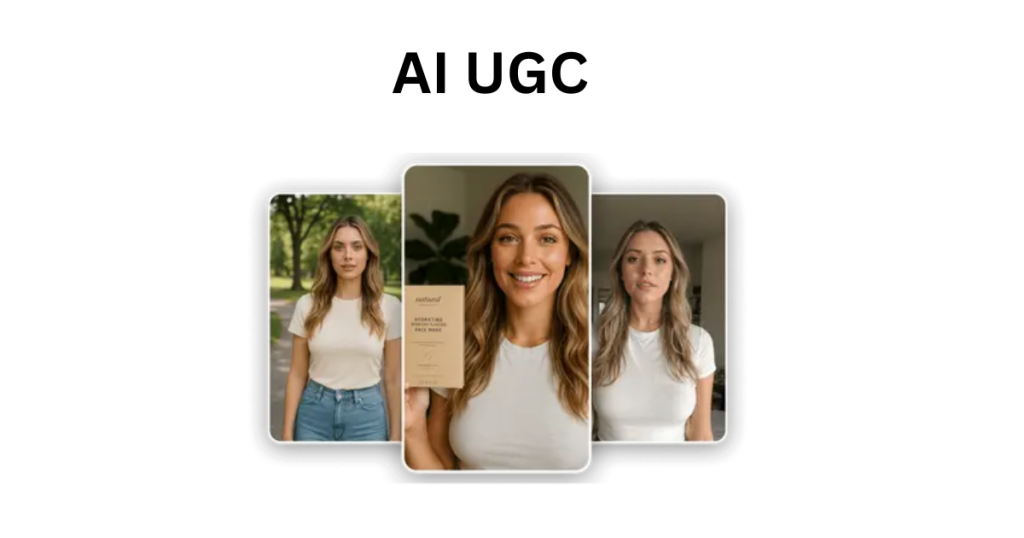
Instead of relying on creator agencies to use AI avatars, automated scripts, and voice-overs to mimic the look and feel of authentic UGC.
The idea isn’t to replace human creativity but to streamline production. AI lets agencies produce content that feels real and relatable while giving them full control over messaging, branding, and turnaround time.
Key Components of AI User-Generated Content
- AI Avatar Generator: Many AI UGC creation tools help the users with AI avatars that look and behave like real poeple. This means users no longer need to chase influencers and creators.
- AI Generated Scripts: Pre-built or auto-generated ad copy tailored for TikTok, Reels, or YouTube Shorts.
- Voices: Natural-sounding AI voiceovers in multiple tones and languages.
- Background: A customizable background that makes the video appear as if it were shot in the real world.
- Product Images-to-Videos AI: Converting product images into AI videos is a popular to showcase UGC-style product videos.
- Product URL-to-Video AI: URLs, or Product details that AI uses to create the product-focused videos.

Benefits of Using AI for UGC Video Production in Agencies
Here are some of the benefits of using AI for UGC video production in agencies.
1. Speed: Create 10–100 videos per week without production bottlenecks
One of the biggest challenges agencies face is the time-consuming process of creating videos for their clients. Traditional video creation usually requires shooting, scripting, and editing. However, with an AI video creation tool, agencies can skip all the hassles and create 10-100 videos in a week. AI video creation tools, such as Tagshop.ai, automate the scripting and editing process, reducing turnaround time.
2. Cost Efficiency: Save on shoots, actors, editors, and logistics
When it comes to UGC video creation, there are three significant expenditures- covering the creator, studio setup, and post-production. For agencies that handle multiple clients, the cost adds up quickly. An AI video creation tool automates the process and helps to save money on shooting, actors, post-production, and logistics.
3. Scalability: Easily produce variants for different products, platforms, or clients
Scaling video production is one of the biggest challenges for agencies in the video industry. Every client has different requirements, unique products, and a platform to cater to. This is where AI UGC video generator make scalability simple. With just a few clicks, agencies can create the UGC videos and make the final edits without spending an extra dime.
4. Creative Testing: Generate multiple hooks, CTAs, and formats for ad performance
Many of the agencies also handle performance marketing. Creating a dozen creatives manually with different hooks, cta, and formats is both expensive and time-consuming. AI UGC creation tools change that by generating unlimited creative variations in minutes. Agencies can test different video lengths, tones, and scripts across platforms quickly identifying what resonates wth the audience. This accelerates the A/B testing process for agencies.
Step-by-Step: How Agencies Can Use AI to Scale UGC Video Production
Here is how agencies can use AI to scale UGC video production.
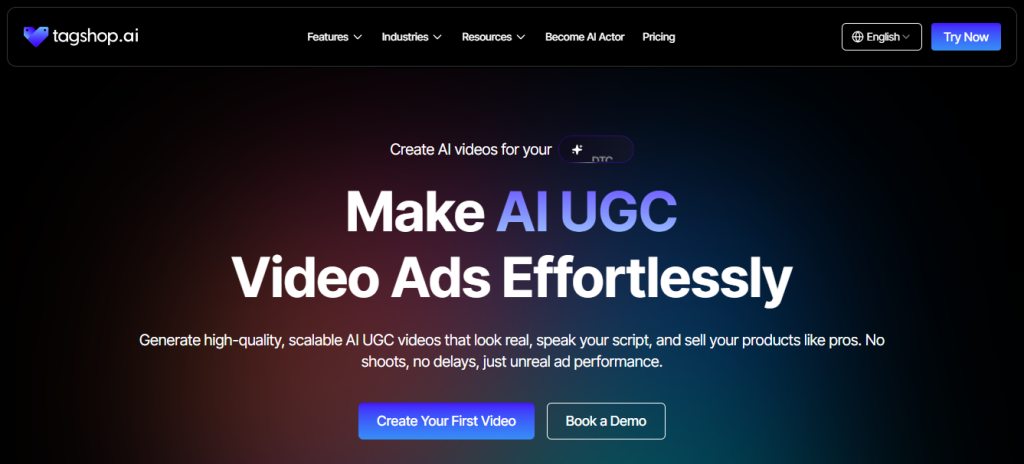
1. Choose the Right AI UGC Tool (Tagshop AI)
Go to Tagshop.ai. Log in to the platform. Click on AI UGC Ads options.
2. Import Product Info or URLs
Paste the product URL in the URL section. The AI will analyze and fetch the product information, features, and more. Users can also import a picture or use one from the stock.
3. Generate Scripts or Use Pre-built Templates
You will now see the dashboard, which displays the product name, description, and product gallery. Edit it the way you like.
4. Customize Style: UGC tone, branding, CTA.
Now you will see the Video Customization page on your screen. This is where you can customize your video, choosing the video aspect ratio, length, and more. Click on Save and Generate script.
5. Choose The Avatars
Now, look for the available AI avatars and pick the one that resonates the best with the brand.
6. Export and Distribute for Ads, Reels, Stories, or Organic
Now, click on the Render button and share the videos with your clients.

Use Cases Across Client Types
1. E-commerce Clients: Product explainers, review-style videos
For e-commerce clients, AI UGC can be a game-changer in building buyer confidence. Product explainer videos take a little more time than the usual video. Therefore, agencies catering to e-commerce clients can utilize tools like Tagshop.ai, which help users create product explainer videos within a few minutes. Tagshop also has features like product holding. This feature enables the user’s AI avatar to hold the product and provide an explanation about it.
Read more: about the AI Product Video feature by Tagshop AI
2. SaaS Clients: Demo walkthroughs, testimonial-style videos
SaaS companies often face the challenge of simplifying complex software for potential users. AI-generated demo walkthroughs can visually guide prospects through product functionalities in a clear and engaging manner.
Testimonial-style videos further build credibility, showcasing relatable “users” explaining how the software solved their pain points. Agencies can quickly produce multiple video variations targeting different industries, buyer personas, or use cases, without needing to hire actors or record lengthy case studies.
This approach shortens the sales cycle and also provides SaaS clients with a scalable video content library for use on landing pages, in email campaigns, and on social media promotions.
3. Local Businesses: AI spokesperson videos for social media
Local businesses such as restaurants, gyms, and supermarkets often lack a marketing budget. Agencies working with these businesses can opt for an AI spokesperson. This will help them create on-brand, professional videos without hiring a photographer.
Agencies can create short promotional clips, FAQ explainers, event announcements, and seasonal offers tailored to their local audience. These videos are ideal for platforms like Instagram Reels, YouTube Shorts, and Facebook Ads, where engaging, bite-sized content drives visibility. They can also customize the tone, background, and script. This allows local businesses to maintain a personal and approachable image at scale.
4. DTC Brands: High-volume TikTok ads with trendy hooks
Direct-to-customer brands thrive on social media platforms where trends come and vanish in seconds. AI video creation tools help agencies create content efficiently without spending too much time.
Best Practices for Agencies
Take a look at some of the best practices for agencies.
1. Don’t Rely On a Single Format Test Variations Regularly
Regularly testing rather than relying on the same format is one of the best practices in various fields. Agencies should generate multiple variations of scripts, hooks, and visuals to identify what resonates best with different audiences. Thanks to the features of Tagshop.ai, agencies can create variations of each video.
2. Use relatable language and social-native hooks.
To create engaging videos for brands, agencies must use relatable language by tapping into their audience’s pain points or desires, using humor, or sharing authentic stories. For social-native hooks, try a short, punchy opening line that creates curiosity, asks a thought-provoking question, or makes a bold statement to stop the scroll and encourage clicks, likes, or shares.
3. Maintain brand voice while keeping the UGC feel.
Even when videos mimic user-generated content, they should align with the client’s brand personality. Strike a balance between authenticity and consistency to ensure the content appears genuine while maintaining a consistent brand identity.

Potential Pitfalls & How to Avoid Them
Here are some of the common pitfalls and how agencies can avoid them.
1. Overly robotic scripts or expressions
AI-generated videos sometimes sound too mechanical, which can detract from their authenticity. To avoid this, review and edit scripts for natural flow, and add conversational phrasing and test different AI voices or avatars until it feels human-like.
2. Repetitive Content With No Variation
Recycling the same scripts or visuals can cause ad fatigue. Use AI to your advantage by generating multiple variations, changing hooks, CTAs, and tones. This would keep content fresh and engaging.
3. Not aligning with the platform’s native style (e.g., TikTok vs YouTube)
A video that performs well on YouTube may not resonate on TikTok. Agencies should tailor their aspect ratios, formats, and storytelling styles to match each platform’s unique culture. While short, snappy, and trend-driven for TikTok, slightly more polished for YouTube.
4. Failing to monitor performance and iterate
Even with AI scaling, not every video will perform. Regularly track KPIs like CTR, engagement, and conversions. Use insights to refine scripts, styles, and targeting for continuous improvement.
The Final Note
It is high time agencies should opt for AI UGC creator tools to speed up their workflow. We have mentioned how AI UGC creation tools work, how to use them, and how they can change the lives of agency owners. The future of UGC is AI-powered, and agencies that adapt early will emerge as winners.

